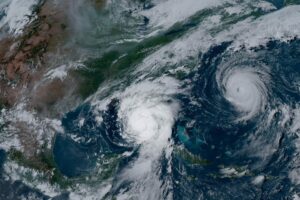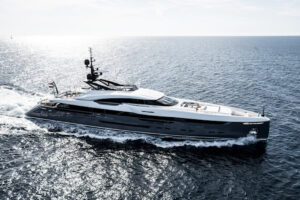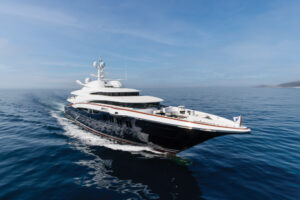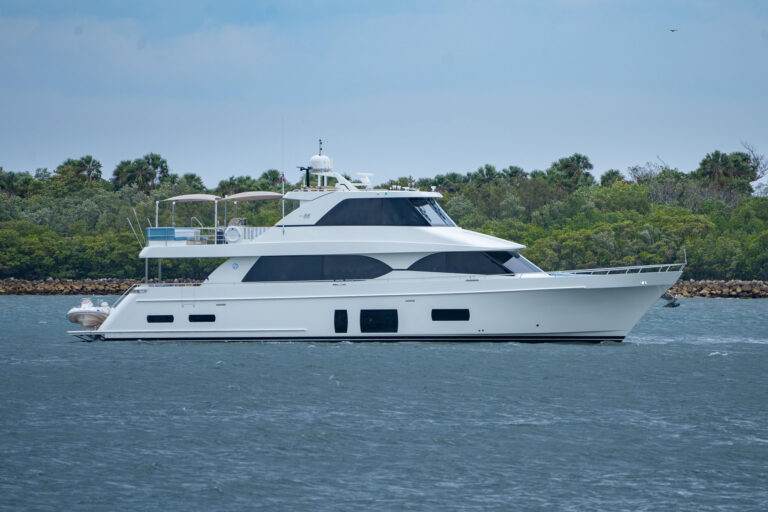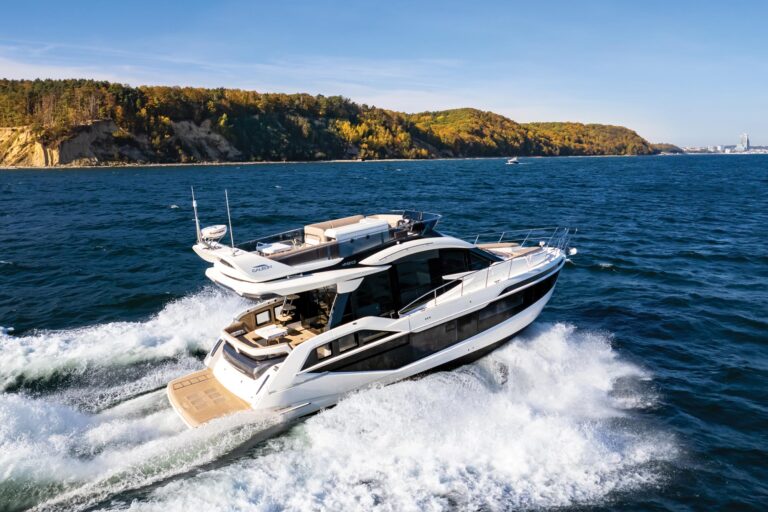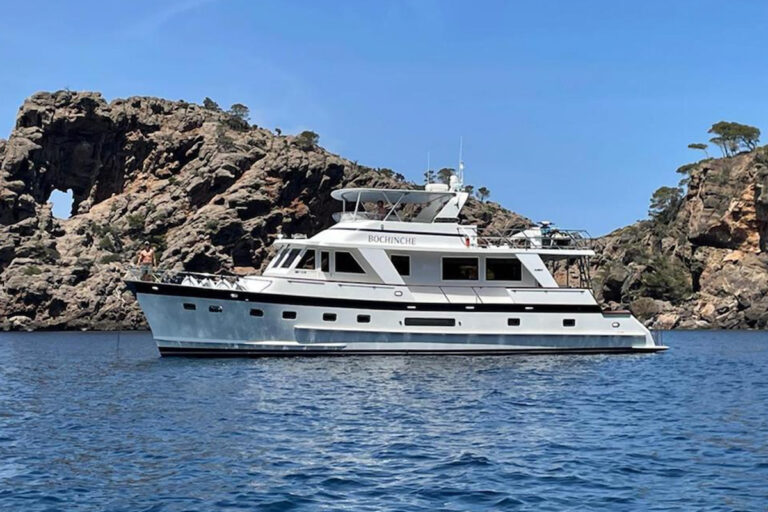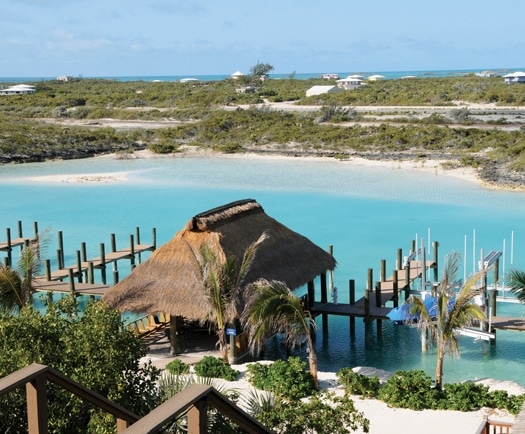
ytgoct23cy1525.jpg
Anchored for three weeks off Stocking Island, just a short swim to Volleyball Beach and the Chat ‘n’ Chill bar and grille (www.chatnchill.com), I had to pinch myself. I even had thoughts of changing the name of our boat to Pinch Me. My wife, youngest son, and I were in cruising heaven, learning the fine art of “simply being,” while breaking the habit of “always doing.” We had worked our way down the Exumas chain of the Bahamas to George Town, and we were about to head back to Nassau, with plans to cross over to Eleuthera and then run up to the Abacos. Our 2 ½-month exploration of the Bahamas has remained a highlight of our 20-plus years of cruising, because it was a voyage of discovery and adventure as well as a time for renewal and reflection. An unhurried schedule allowed us to get to know and appreciate the Bahamian people and their astoundingly beautiful surroundings. Judging from the variety of cruisers we encountered along the way, we also learned that one doesn’t need a gold-plated, oceangoing vessel or a captain’s license to make this journey to paradise.
The biggest challenge is getting from Florida to a Bahamian port of entry, which requires crossing the Gulf Stream, a virtual river, 45 miles wide, that flows north at 2.5 knots. Cross when a strong wind is out of the north and opposing the fast current, and you’ll find this a dangerous place to be in any size boat. But wait for the winds to decrease and clock around from the south, and even small, center- console boats can comfortably make the trip across. Don’t plan on keeping a tight schedule if you’re transiting between November and February, as it’s not unusual to get stuck for a week on either side while waiting for favorable winds.
Popular ports of departure are Miami, Ft. Lauderdale, and West Palm Beach, and most ports of entry are less than 60 miles away. Check the weather forecast, have a full tank of clean fuel, time your departure so you have plenty of daylight upon arrival, enter your waypoints to your approach, and carry up-to-date charts on board. Border Protection now requires all American citizens, even infants, to present passports in order to get back into the States.
From Miami, it’s just 45 miles to Cat Cay, where you can check into Customs and Immigration and get your 12-month cruising permit at the local marina. Today the permit costs $150 for boats 35 feet and under and $300 for larger vessels. These fees cover up to four persons and are good for one year. Those traveling with pets must obtain an import permit by submitting a written application to the Ministry of Agriculture and Marine Resources in Nassau.
Cat Cay is a private island, and while the Hawks Nest Marina (www.hawks-nest.com) is very accommodating, you are restricted to its immediate area. An alternative is to enter at nearby Bimini, which has a number of modern marinas and restaurants. Known for its sportfishing, Bimini is quite the tourist attraction and is chock-a-block with hotels, resorts, and shopping, as well as colorful evening spots.
Once you make it across the Gulf Stream, island hopping can be done mostly in small steps, with few long or stressful passages. If you’re planning a trip during the colder months, you’ll have warmer temperatures and gentler winds heading first to the Exumas, so leave the Abacos for the summer months.
From Cat Cay or Bimini your first step to the Exumas will be to cross the Great Bahama Bank to the Berry Islands. This 75-mile passage will enchant you with its spectacular Bahamian water. Depths range from 20 to 9 feet, and because of the water’s clarity, you’ll think your boat is miraculously floating on air.
Chub Cay (www.chubcay.com) is a popular stopping off point, but the old, comfy Chub Cay Marina has been replaced by a modern, luxurious facility for yachts up to 200 feet. Unfortunately, the project went bankrupt, and it’s operating in receivership at this writing. But we’ve also enjoyed anchoring overnight outside and snorkeling off Mama Rhoda rock.
The next step to the Exumas is a 35-mile offshore passage to New Providence. An alternative to entering busy Nassau Harbor is to anchor in West Bay, a large body of water protected from all directions except the west. From West Bay, a 40-mile passage brings you to Allans Cay, one of the northernmost islands of the 95-mile Exumas chain, and one of the most fascinating. Pay attention to the charts and the weather, as you’ll need to navigate around the shallow coral heads of the Yellow Bank. Time your passage so that the sun is behind you (for best visibility) and carefully follow the recommended waypoints.
The cut into Allans Cay is fairly easy, although the narrowness and current in the anchorage requires setting two anchors “Bahamian Style.” You’ll want to dinghy in to meet the locals-the prehistoric iguanas, which are about the size of small dogs. We’ve spent a couple days here, in awe of the bright blue water and pure white, sandy beaches-adjusting our minds and bodies to a different world.
Just south, at Highbourne Cay, you have a choice of sailing the Exuma Sound, the chain’s east coast, or the Exuma Bank, the more protected west coast. The sound is open to the ocean and the prevailing southeast winds, so be watchful of the weather. Protected from these winds and ocean swells, the Bank is trickier to navigate with its far-reaching shoals. Either way, you can change your mind by passing through one of the many cuts along the route.
Highbourne Cay Marina is the first of several modern facilities that dot the 365-island chain. You’ll find fuel, water, and a small grocery store, and we found it to be the perfect place to stop after being anchored out for over a week. It’s a private island, so only those staying at the marina are free to roam.
Normans Cay, infamous for its past connection with Colombian drug runners, is 10 miles south and a favorite stopover. The island is now safe and undergoing positive changes, including new ownership of MacDuff’s (www.ncbcmacduffs.com), a casual mini-resort with guest villas, a bar, and restaurant. The area between the old dock and a submerged DC-3, supposedly gunned down by drug enforcement agents, is a popular anchorage and snorkeling site.
Less than 15 miles south is Warderick Wells, part of the protected Exuma Land and Sea Park. Call the park on VHF channel 16 to reserve a mooring in the north anchorage, and be sure to visit the park headquarters after you arrive. The park ranger and his volunteer staff will show you where the best hiking trails and snorkeling sites are. You can even volunteer your services in exchange for a free mooring. A walk to the top of Boo Boo Hill is worth the effort for its spectacular view and to read the flags, pennants, and carved signs left by visiting yachtsmen from around the world.
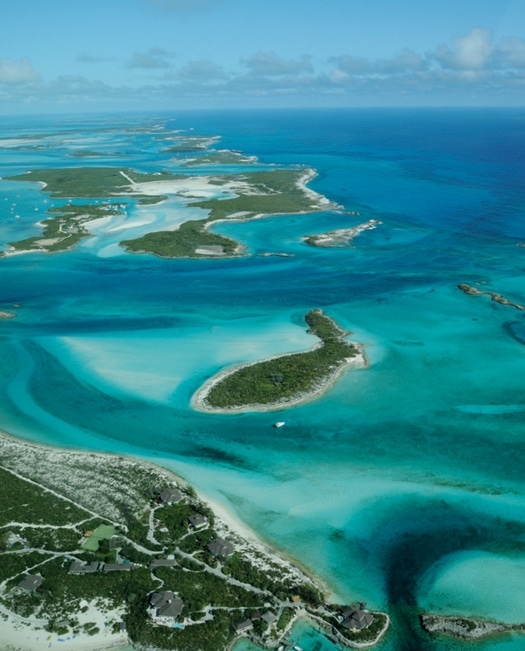
| | |
From Warderick Wells work your way south in small steps, visiting the marinas at Compass Cay, (www.compasscay.com) Sampson Cay, (www.sampsoncayclub.com), and the friendly, laid-back Staniel Cay Yacht Club (www.stanielcay.com). A big attraction is snorkeling in Thunderball Grotto, made famous in the James Bond movie, Thunderball. Tie your dinghy to one of the small moorings outside the cave entrance, and time your dive to low slack tide. Natural skylights in the cave’s ceiling and walls light up the water, which is filled with tropical fish.
To appreciate the simple lifestyle and friendliness of the Bahamian people you’ll want to visit the settlements of Black Point and Little Farmers, both of which have protected anchorages. After a challenging 20- mile passage to Little Farmers in a violent storm, we enjoyed the hospitality of Terry and Ernestine Bain, owners of the Ocean Cabin bar and restaurant (www.oceancbn.com). Ernestine cooked us a terrific dinner, and Terry entertained us with stories of his world travels.
From the wide, easy-to-navigate Farmer’s Cay Cut, it’s just 35 miles down the sound to George Town, but it requires getting through the notorious Conch Cay Cut off Great Exuma Island. Make this passage during good visibility, and enter the key waypoints in your chart plotter. There are two reefs to navigate, so pay close attention to where you are at all times.
Much has been written about George Town, some of it negative. “It’s too crowded.” Or, “There’s a small group of cruisers who think they own the place.” We arrived in late March prepared for the worst and planning to stay just a couple of days. But after three weeks we had to force ourselves to weigh anchor and head back north.
Yes, there are lots of boats in the harbor, but it’s big enough to accommodate 500 boats or more. And there are small groups who seem a bit territorial, but who cares? There are enough beaches, bars, food, beer, palm trees, water, and swinging room for everyone. For us, the best part of George Town was making new friends with whom we have kept in touch over the years. If you genuinely like people, you’ll find George Town to be fun and welcoming.
For most cruisers, George Town is a turning-around point, since going farther requires lengthy ocean passages. But as we discovered, there is much more to see in the Bahamas including Nassau, Eleuthera, and the entire chain of the Abacos-all quite different and equally appealing. We headed back to Nassau and spent a week adjusting to “city life” at the very accommodating Hurricane Hole Marina (www.hurricaneholemarina.com). Those who prefer over-the-top luxury will want to reserve a slip at Atlantis (www.atlantis.com).
To break up the 80-mile passage to Little Harbour in the Abacos, we took a side trip to Spanish Wells off the island of Eleuthera. The local fishing fleet supplies more than half the Bahamian lobsters, conch, and fish throughout the islands, and the colorful settlement dates back to the American Revolution when Loyalists fled to here. Nearby Harbour Island, where the sand is pink and the architecture is reminiscent of New England, is reached by threading the treacherous “Devil’s Backbone” of coral heads around the northern tip of Eleuthera. Hiring a pilot is highly recommended.
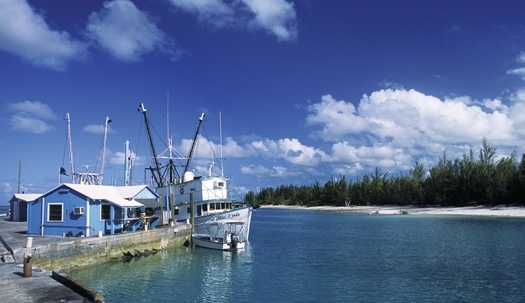
| | |
The Abacos, another world of cruising delights, are northwest of Eleuthera, and their first hospitable landing is Little Harbour on Great Abaco Island. This 45-mile ocean passage should be made in calm weather, as navigating the entrance between the reef can cause high blood pressure when the wind is blowing. Once inside, hang a left into the basin of Little Harbour if you draw less than five feet and if the tide is high. Follow the floats that mark the channel and pick up a mooring or drop the hook in front of Pete’s Pub (www.petespubandgallery.com). You’re about to begin your Abacos odyssey.
Pete Johnston is the son of sculptor Randolph Johnston, and today his family continues to run the pub and adjoining gallery and foundry. The family’s artwork can be seen from Nassau to Florida and beyond, and many returning cruisers consider Pete’s a must stop for a cold Kalik and a freshly grilled fish sandwich.
Cruising the Abacos couldn’t be easier, as long as your vessel draws less than six feet and you follow the charted courses. The Sea of Abaco, which runs between Great Abaco Island and its many cays, is mostly protected, and because it’s so shallow, you can anchor just about anywhere. The most popular cruising destinations- and there are many-are between Little Harbour and Green Turtle Cay, a distance of less than 40 miles, all of which can be traveled inside except for one quick hop outside at Whale Cay Passage.
Compared to the Exumas, the Abacos are more settled, offering more choices for accommodations, places to eat, and things to do. But in contrast to the waterways of South Florida, cruising here, especially during the cooler months, means deserted beaches, available boat slips, and waterfront restaurants that don’t require reservations- or even shoes.
Marsh Harbour, where several charter companies are based, is the center of activity. A network of ferries serves the more popular islands, and with its major airport, it’s a good place to switch crews. Groceries, hardware stores, liquor stores, drugstores, banks, coin laundries, and a post office make it ideal for provisioning. If you need work done on your boat, nearby Marsh Harbour Boat Yard (www.mhby.com) is a full service facility with an 85-ton Travelift. Most marinas offer attractive, long-term rates, and many cruisers come here for the entire winter.
A highlight of every Abacos visit is, of course, Hope Town, home of the much photographed red-and-white-striped lighthouse. Just seven miles from Marsh Harbour, this charming little town on Elbow Cay boasts a couple of small marinas, a mooring field for boats up to 45 feet, a beautiful public beach, a library, two grocery stores, a museum, and several waterfront restaurants. The architecture and colorfully painted cottages and inns have been the subject of artists and photographers around the world. If the inner harbor is full, you can safely anchor outside.
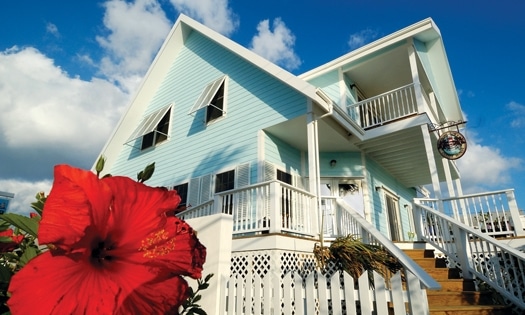
| | |
Nearby Man-O-War Cay attracts a slightly different crowd with its boatbuilding heritage and “dry” restaurants. Great Guana Cay offers picturesque anchorages and the all-new Baker’s Bay (www.bakersbayclub.com), a luxury marina development that can accommodate megayachts up to 250 feet. Drop your anchor in Fishers Bay or Settlement Harbour and walk to the ocean beach, stopping at Nipper’s (www.nippersbar.com) for a cold one. If you’re a party animal, don’t miss their Sunday bash. Continuing north, Green Turtle Cay offers protected anchorages, the tidy settlement of New Plymouth, good restaurants, and full service marinas. Spanish Cay is an official port of entry and features a marina with full hookups, a pool, and spa. Last, but not least, is Walker’s Cay, one of the top sportfishing spots in all of the Bahamas.
A popular route back to the U.S. is to anchor overnight at Great Sale Cay and then proceed to West End on the tip of Grand Bahama Island. Here you can get your last taste of the Bahamian lifestyle before crossing the Gulf Stream to Florida. Landing in West Palm Beach on a busy weekend after nearly three months in the islands, we experienced sudden culture shock. Were we back in “civilization,” or had we actually left it 60 miles to our east? Based on how often we return to these enchanted islands, we think we know the answer.

